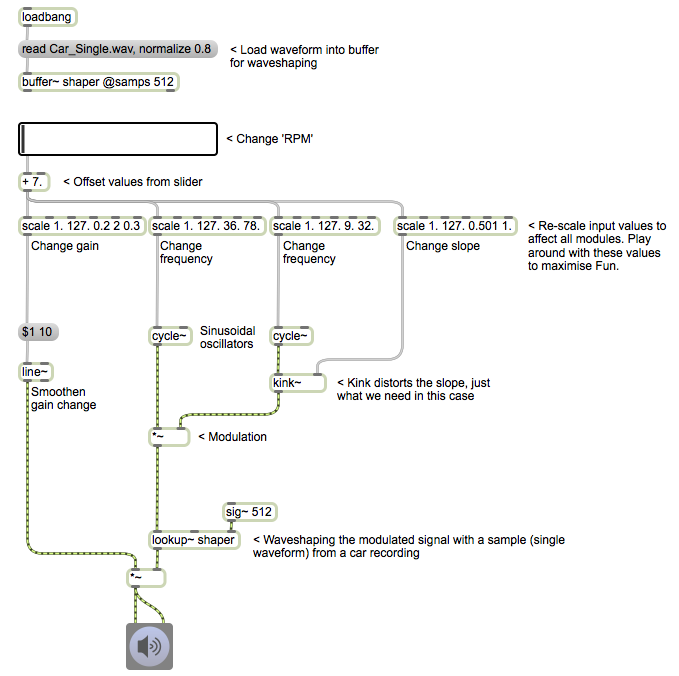Years ago, when I first started dabbling in the deep and dark world of Max/MSP, I attempted to create the sound of a car engine. This month’s theme (which is ‘vehicles’, if you didn’t know) reminded me about it. I opened up the patch after ages and was a bit appalled by the state of it. There are hidden skeletons in every old patch!
Instead of digging through a dated project, I recreated a patch/idea I had used about a year ago when designing sounds for a remote controlled toy airplane. I tried to adapt the simplicity of that implementation to a ‘regular’ car engine.
Here’s a sample of what it sounds like (all synthesised):
This patch was put together fairly quickly and could do with more refinements to improve the character and reduce the amount of ‘digital-ness’ in the sound. The model quite obviously breaks at higher frequencies/RPMs.
Here’s the patch:
Quite simple. How does it work?
Two low frequency oscillators [cycle~] at different frequencies are used to create a pulsing, rhythmical wave. The slope of the second oscillator is distorted through [kink~], which helps create a more prominent pulsing rhythm. The first oscillator is then amplitude/ring modulated by the second oscillator. That signal is then waveshaped [lookup~] with a single cycle (512 samples long) off a car engine recording I had made a few years ago. The frequency of the two oscillators, the slope of kink~ and the overall gain is increased/decreased along with the change in ‘RPM’.
A lot more variation can be created by changing the waveshaping waveform and/or the scaling values. Feel free to download the patch from here and do what you want with it!
Happy patching.

Awesome!
Procedural Audio is our future!